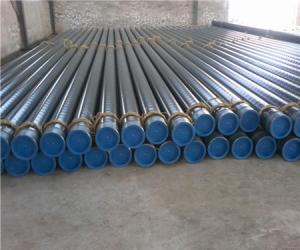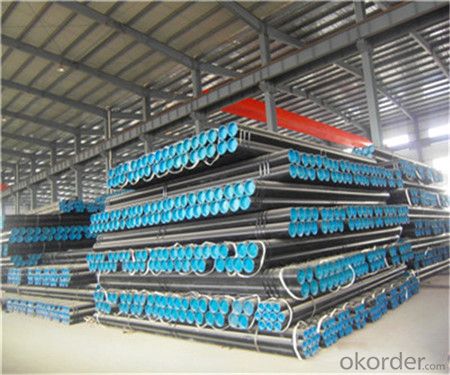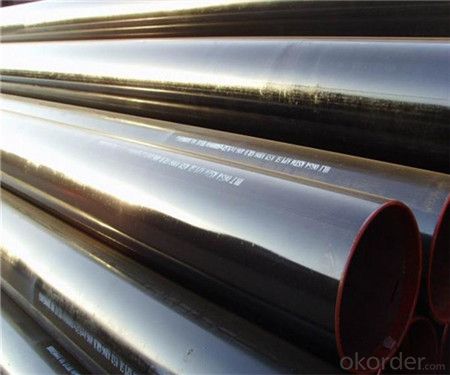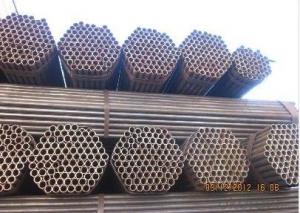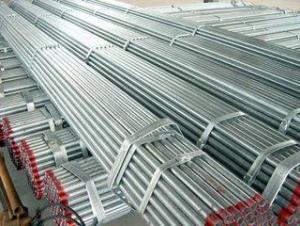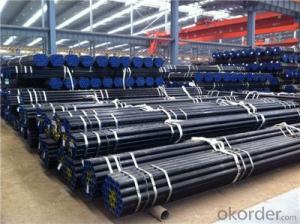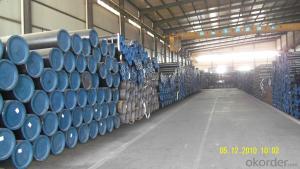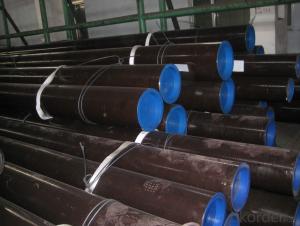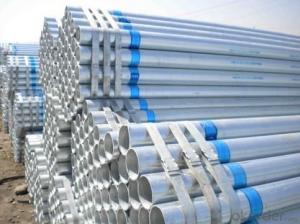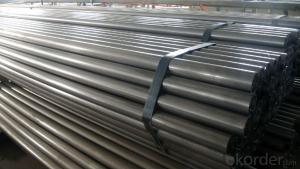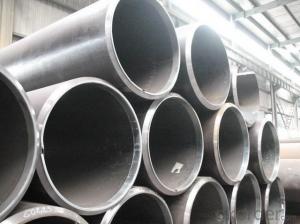API Steel Seamless Casing & Tubing supplier
- Loading Port:
- China Main Port
- Payment Terms:
- TT or LC
- Min Order Qty:
- 30 m.t.
- Supply Capability:
- 12000 m.t./month
OKorder Service Pledge
OKorder Financial Service
You Might Also Like
1、Full series of products provides an easier access for one stop purchase
▲ Line pipe
▲ Tubing and casing
▲ L & M & H boiler tube
▲ Gas cylinder tube & pipe
▲ Mechanical & Structural pipe
▲ Ship-building tube & pipe
▲ Automobile tube & pipe
2、Main Features of the Seamless Pipe ASTM A106/53:
• High manufacturing accuracy
• High strength
• Small inertia resistance
• Strong heat dissipation ability
• Good visual effect
• Reasonable price
3、Seamless Pipe ASTM A106/53 Specification:
Standard | GB, DIN, ASTM ASTM A106-2006, ASTM A53-2007 |
Grade | 10#-45#, 16Mn 10#, 20#, 45#, 16Mn |
Thickness | 8 - 33 mm |
Section Shape | Round |
Outer Diameter | 133 - 219 mm |
Place of Origin | Shandong, China (Mainland) |
Secondary Or Not | Non-secondary |
Application | Hydraulic Pipe |
Technique | Cold Drawn |
Certification | API |
Surface Treatment | factory state or painted black |
Special Pipe | API Pipe |
Alloy Or Not | Non-alloy |
Length | 5-12M |
Outer Diameter | 21.3-610mm |
Grade | 20#, 45#, Q345, API J55, API K55, API L80, API N80, API P110, A53B |
Standard | ASME, ASTM |
4、Packaging & Delivery
Packaging Details: | seaworthy package,bundles wrapped with strong steel strip |
Delivery Detail: | 15-30days after received 30%TT |
5、FAQ of Seamless Pipe ASTM A106/53:
Why should you chose us?
● Full series of products provides an easier access for one stop purchase
▲ Electric Resistance Welded (ERW) Steel Pipe
▲ Longitudinal Submerged Arc Welded (LSAW) Steel Pipe
▲ Spiral Submerged Arc Welded (SSAW) Steel Pipe
▲ Hollow Section (Square and Rectangle Pipe)
▲ Hot Dipped Galvanized Steel Pipe
6、Seamless Pipe ASTM A106/53 Images:
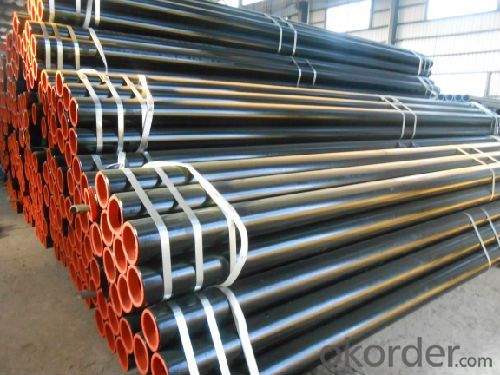
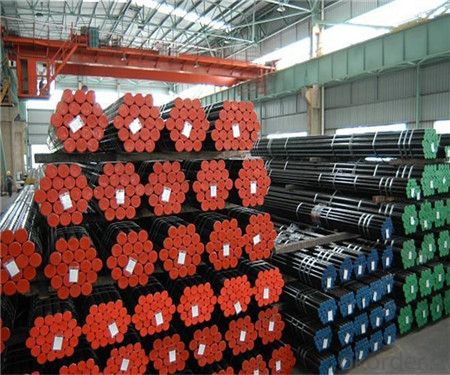
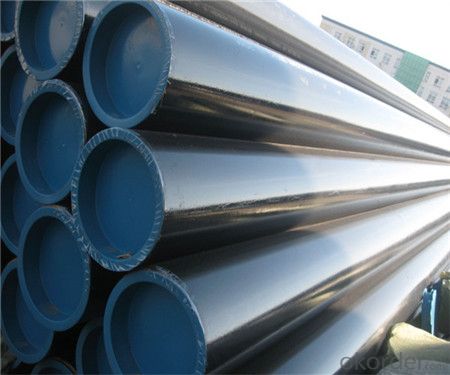
- Q: How are steel pipes coated for insulation purposes?
- Various methods and materials are commonly used to coat steel pipes for insulation. One method involves applying a thermal insulation coating, typically made of a high-performance polymer or epoxy-based material, to the surface of the pipe. To ensure proper adhesion of the coating, the steel pipe is first thoroughly cleaned to remove dirt, grease, and rust. This cleaning process, known as abrasive blasting, involves propelling small particles at high speed to remove contaminants and create a clean, rough surface. Once the surface is prepared, the thermal insulation coating is applied using techniques such as spraying, brushing, or rolling. Multiple layers of the coating are carefully applied to ensure adequate coverage and thickness. This forms a protective barrier between the steel pipe and the external environment, preventing heat transfer and reducing energy loss. In addition to thermal insulation coatings, steel pipes can also be coated with materials like polyurethane foam or mineral wool. These materials offer excellent thermal insulation properties and are often used in applications where high-temperature resistance is necessary. Overall, the insulation of steel pipes involves a combination of surface preparation and the application of specialized coatings. These coatings serve to minimize heat loss, improve energy efficiency, and protect against corrosion and other environmental factors.
- Q: How are steel pipes used in the transportation industry?
- Steel pipes are used in the transportation industry for various purposes, including the construction of pipelines for transporting oil, gas, and other fluids. They are also used in the manufacturing of vehicles, such as cars, trucks, and trains, where they are commonly used for exhaust systems and structural components. Additionally, steel pipes are utilized in the construction of bridges, tunnels, and other infrastructure projects that support transportation networks.
- Q: How are steel pipes used in the manufacturing of pressure vessels?
- Steel pipes are commonly used in the manufacturing of pressure vessels as they provide the necessary strength and durability to withstand high internal pressure. These pipes are welded or seamless and are often used as the main structural component of the vessel. They allow for the efficient flow of fluids or gases within the vessel and provide a reliable and secure containment system for various industrial applications.
- Q: How do you calculate the flow rate through a steel pipe?
- To calculate the flow rate through a steel pipe, you need to consider several factors. The most important ones are the diameter of the pipe, the pressure difference across the pipe, and the properties of the fluid flowing through it. Firstly, measure the inside diameter of the steel pipe accurately. This measurement is essential as it determines the cross-sectional area through which the fluid flows. The units for the diameter should be consistent with the units used for other measurements. Next, determine the pressure difference across the pipe. This can be done by measuring the pressure at two points along the pipe, typically at the inlet and outlet. The pressure measurements should be taken at the same height to avoid any discrepancies. The pressure difference is usually given in units of pressure (such as psi, kPa, or bar). Once you have the diameter and pressure difference, you can use the Bernoulli equation or the Darcy-Weisbach equation to calculate the flow rate. The Bernoulli equation relates the pressure difference to the velocity of the fluid. However, this equation assumes ideal conditions, neglecting factors such as friction losses, viscosity, and turbulence. The Darcy-Weisbach equation is more accurate and considers these factors. To use the Darcy-Weisbach equation, you need to know the properties of the fluid flowing through the pipe, such as its density and viscosity. These properties can be determined either through experimentation or by referring to literature values. Once you have all the necessary information, you can use the Darcy-Weisbach equation: Q = (π/4) * D^2 * √[(2 * ΔP) / (ρ * f * L)] Where: Q is the flow rate (in cubic meters per second or any other consistent units) D is the diameter of the pipe (in meters or any other consistent units) ΔP is the pressure difference across the pipe (in Pascals or any other consistent units) ρ is the density of the fluid flowing through the pipe (in kilograms per cubic meter or any other consistent units) f is the friction factor, which depends on the Reynolds number and the roughness of the pipe. L is the length of the pipe (in meters or any other consistent units) By plugging in the values for all the variables, you can calculate the flow rate through the steel pipe accurately.
- Q: What are the different types of pipe connections used with steel pipes?
- There are several types of pipe connections commonly used with steel pipes. Some of the most common types include: 1. Threaded connections: These connections involve threading the ends of the pipe and using threaded fittings to connect them. This type of connection is typically used for smaller diameter pipes and is easy to install and dismantle. 2. Welded connections: Welding is a common method used to connect steel pipes. It involves joining the ends of the pipes together by melting the metal and fusing them together. Welded connections are durable and strong, making them suitable for high-pressure applications. 3. Flanged connections: Flanges are used to connect pipes by bolting them together. Flanged connections are commonly used in industrial applications and are often used for larger diameter pipes or when the pipe needs to be easily disassembled for maintenance purposes. 4. Grooved connections: Grooved connections involve using grooved fittings that have grooves on the inside to connect the pipes. These connections are often used in fire protection systems and are quick and easy to install. 5. Compression connections: Compression fittings are used to connect steel pipes by compressing a ferrule onto the pipe. This type of connection is commonly used in plumbing applications and provides a tight and secure seal. 6. Mechanical connections: Mechanical connections, such as couplings or clamps, are used to connect steel pipes without the need for welding or threading. These connections are often used for temporary or emergency repairs. Each type of pipe connection has its advantages and disadvantages, and the choice of connection method will depend on factors such as the application, pipe size, and installation requirements. It is important to carefully consider these factors to ensure a secure and reliable connection for steel pipes.
- Q: How are steel pipes used in the manufacturing of renewable energy systems?
- Steel pipes are widely used in the manufacturing of renewable energy systems due to their durability, strength, and versatility. They are primarily used in the construction of wind turbines, solar panel frames, and the transmission of geothermal energy. Steel pipes provide the necessary structural support and stability required for these systems, ensuring their long-term functionality and reliability. Additionally, steel pipes are often used for transporting and distributing renewable energy sources, such as natural gas and hydrogen, further contributing to the overall efficiency and sustainability of these systems.
- Q: What is the difference between steel pipes and copper pipes?
- The main difference between steel pipes and copper pipes lies in their material composition. Steel pipes are made of iron and carbon, while copper pipes are composed of copper metal. Additionally, steel pipes are generally more durable and can withstand higher pressure and temperature levels, making them suitable for industrial applications. On the other hand, copper pipes are more malleable and easily bent, making them ideal for residential plumbing systems. Moreover, copper pipes have better corrosion resistance compared to steel pipes, which may require coatings or treatments to prevent rusting.
- Q: What are the different types of steel pipe supports for high-temperature applications?
- There are several types of steel pipe supports designed specifically for high-temperature applications. Some common ones include rigid supports, such as rigid hangers and clamps, which provide strong support and prevent pipe movement. Expansion joints are also used to accommodate thermal expansion and contraction in the pipes. Additionally, spring supports and constant supports are employed to absorb vertical movement and maintain a consistent pipe elevation.
- Q: What is the difference between API 5L and ASTM A106 steel pipes?
- Seamless carbon steel pipe is commonly specified under two widely used specifications: API 5L and ASTM A106. These specifications cover similar materials but have different criteria in terms of chemical composition, manufacturing processes, mechanical properties, and testing. API 5L, created by the American Petroleum Institute (API), is designed for line pipe used in oil and gas transportation. It applies to both seamless and welded steel pipes suitable for conveying gas, water, and oil in the natural gas and petroleum industries. API 5L outlines the minimum requirements for manufacturing two product specification levels (PSL 1 and PSL 2) of seamless and welded steel pipes, which have varying chemical composition and mechanical properties. In contrast, ASTM A106, developed by the American Society for Testing and Materials (ASTM), is specifically for seamless carbon steel pipe used in high-temperature service. It covers seamless carbon steel pipe with nominal wall thickness as specified in ANSI B36.10, ranging from NPS 1/8" to NPS 48". ASTM A106 provides guidelines for chemical composition, manufacturing processes, mechanical properties, and testing. A significant distinction between API 5L and ASTM A106 lies in the intended application of the pipe. API 5L is designed for the transmission of liquid and gas, while ASTM A106 is used in high-temperature service. Moreover, the chemical composition and mechanical properties of the steel may differ between the two specifications depending on the grade and type of steel being utilized. To summarize, API 5L and ASTM A106 are extensively used specifications for carbon steel pipe, but they exhibit notable differences in terms of their application, chemical composition, manufacturing processes, mechanical properties, and testing requirements. It is crucial to carefully consider these factors when selecting the appropriate steel pipe for a specific application.
- Q: Can steel pipes be bent or shaped?
- Yes, steel pipes can be bent or shaped through various methods such as hot bending, cold bending, or using specialized machinery like pipe benders.
Send your message to us
API Steel Seamless Casing & Tubing supplier
- Loading Port:
- China Main Port
- Payment Terms:
- TT or LC
- Min Order Qty:
- 30 m.t.
- Supply Capability:
- 12000 m.t./month
OKorder Service Pledge
OKorder Financial Service
Similar products
Hot products
Hot Searches
Related keywords
